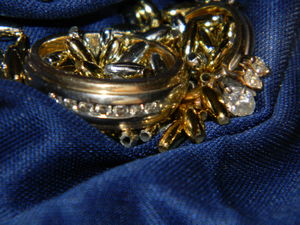There is a man who could be seen as a genius in the children’s literature world. He has illustrated over 200 children’s books. This fascinating author also wrote One-hundred of those books. His books cover themes ranging from his own life, the holidays, folktales, Bible stories, Mother Goose rhymes, and a number of informational books. Because of the fact that he receives nearly 100,000 fan letters each year, many believe this man to be one of the most popular children’s book creators. The fact that this man is so renowned and still cranking out new children’s books each year has focused my attention on him for an author study. I am interested in learning more about a man who has touched so many children’s lives in such a creative way. That man is the brilliant Tomie dePaola.
Tomie dePaola (his given name is Thomas Anthony dePaola) was born September 15, 1934, in Meriden, Connecticut from a loving family of Irish and Italian background. He was born to Joseph and Florence dePaola, two parents that were extremely supportive of their son’s dreams and ambitions. dePaola also has an older brother named Joseph, and two younger sisters named Judie and Maureen. He grew up in a very happy home. dePaola remembers listening to his mother read to him and his siblings, and it was her readings that instilled in Tomie a love of books. There was an emphasis in dePaola’s home on enjoying school, family and friends. This family expected its members to embrace personal talents and interests. At the age of four, dePaola’s talents and interests included illustrating and writing (along with singing and dancing). dePaola’s family was extremely supportive by getting the future artist/writer all the art supplies that he needed (and an immediate enrollment in dancing classes). His family was a strong influence on dePaola’s success as a writer and illustrator. The first book that Mr. Tomie dePaola wrote was Glimmera, The Story of a Mermaid for his little sister’s birthday when he was only ten years old. That is truly an early start.
Tomie dePaola’s drive to succeed as a writer and illustrator transferred into his school years. In school, this author took art classes and created art for posters, exhibitions, and theatre productions among other things. Following high school, dePaola entered Pratt Institute in Brooklyn, New York, where he spent years learning how to draw anything and everything. After graduating from Pratt Institute, dePaola spent a brief time in a Benedictine Monastery in Vermont. This monastery was a very small place with a very good library. The monastery gave dePaola a way to view life. He then went on to attend graduate school at the California College of Arts and Crafts. He taught art and theatre at New England College in Henniker, New Hampshire from 1962 to 1978 before he devoted himself fully to children’s literature. His first children’s book job was that of illustrating a science book entitled Sound by Lisa Miller. The first published book that dePaola himself wrote and illustrated was that of The Wonderful Dragon of Timlin. That was about forty years ago. There would be hundreds more to come. Since the year of 1965, Mr. Tomie dePaola has published at least one book a year. Generally, it was more like four to six books annually. Tomie dePaola has been a very busy man, and many children and adults (myself included) have taken pleasure in his work.
I read several books and explored many websites during my research for this author study, which told of how the literary community has recognized and honored Tomie dePaola’s work numerous times. In 1976, dePaola received The Caldecott Honor Award for Strega Nona. He has also received the Newbery Honor Award, The New Hampshire Governor’s Arts Award for Living Treasure, The Kerlan Award from the University of Minnesota, and The University of South Mississippi Medallion. The Society of Children’s Book Writers and Illustrators have also awarded this author for his works. The Catholic Library Association and Smithsonian Institution have recognized Tomie dePaola with awards as well. In 1990, Tomie dePaola was the United States nominee for the Hans Christian Anderson Medal for Illustration, and a number of American colleges have presented Mr. dePaola with honorary degrees. Children and adults will continue to recognize and appreciate this author/illustrator’s work.
Today Tomie dePaola lives in New London, New Hampshire. He is not married nor does he have any children. He lives with his two Welsh Terriers, Moffat and Markus. He had two other dogs, Morgan and Madison, but they have unfortunately died. Something I found really interesting was that dePaola’s studio is attached to a renovated 200-year-old barn. I can just imagine this author sitting in his unique studio working furiously on his new children’s book idea. Tomie dePaola will continue to write children’s book for his beloved fans.
I have read a number of books written and illustrated by this incredible author. They are as follows:
Nana Upstairs & Nana Downstairs (1973) (re-released version): This book is about a young boy named Tommy, and his two Nanas. His first Nana is Nana Downstairs, and she is Tommy’s grandmother. She is constantly downstairs in the kitchen doing something. His second Nana is Nana Upstairs, and she is Tommy’s great grandmother, who is 94 years old and too weak to go downstairs much. Tommy would visit his two Nanas on Sundays and have a really good time. One day Nana Upstairs dies, and Tommy is very upset about this. That night Tommy sees a falling star, and Tommy’s mother says that it is his Nana Upstairs giving him a kiss. Years later, when Nana Downstairs dies, Tommy sees another shooting star and says that his two Nanas are now both Nana Upstairs. This is Tomie dePaola’s favorite self-written book. It is a true story. Nana Upstairs’ name was Honorah O’Rourke Mock, and Nana Downstairs’ name was Alice Mock Downey. The book has a very nostalgic feeling associated with it, and dePaola has used very soft colors in illustrating it.
The Cloud Book (1975): This book discusses the different types of clouds one sees in the skies. dePaola describes the three major types (cumulus, stratus and cirrus) along with other common cloud types. This author also examined myths associated with cloud shapes (example: Greeks believed Hermes once stole the sun’s cattle, which were the clouds). Different sayings associated with clouds, and also information about how clouds can tell us about our weather, are present in this book. A silly story about clouds ends the book. I think that the silly story might have been the best part of it.
Strega Nona, Her Story (1996): This book tells the story of one of Tomie dePaola’s recurring characters. Nona was born and her Grandma Concetta believed her to be a strega (witch) from the beginning. As she grew up, Nona made friends with another strega named Amelia. Amelia learned the new ways of magic, but Nona kept to her grandmother’s old ways. After many years of studying with Grandma Concetta, Nona takes her place as the great strega. Strega Nona learns that her grandmother’s secret ingredient was love. The book ends with Strega Nona inviting a young man into her home so that he may help her, and also so that Nona could teach him the ways of her old magic.
The Legend of the Indian Paintbrush (1996): An Indian child named Little Gopher was much different from the other boys in his tribe. The gods spoke and said that he was to use his artistic abilities to paint the glories of his tribe rather than become a fighting warrior. After he served his people by painting these pictures, the great spirits awarded Little Gopher with the ability to paint the colors of the sky on his white buckskin. The paints and brushes left behind root themselves into the ground and bloom into the flowers we now call the Indian Paintbrush at the very end of this story. This book is only one of dePaola’s numerous folktales.
Bill and Pete to the Rescue (1998): Tomie dePaola has written about the characters Bill and Pete in two other books. Bill is a crocodile and Pete is his toothbrush (a bird). In this book, Bill and Pete are on a mission to save Bill’s cousin from the same man who killed Bill’s father. They travel all the way from the Nile River to New Orleans, Louisiana, where they befriend numerous alligators and find both Bill’s cousin and father alive and well. Being that this book is set in a familiar setting (I live in Louisiana), it was obvious that dePaola did do some research on the New Orleans area before writing or illustrating this book.
Jamie O’Rourke and the Pooka (2000): Jamie O’Rourke also appears in several of Tomie dePaola’s books. This character is a very lazy, Irish man. His wife has left him alone for a week, and he is in charge of cleaning the dishes and sweeping the house. He is a very indolent man however. He and his cronies make a huge mess, and a pooka comes in during the night to clean up after them. The pooka was once a very lazy man who was punished for his lazy ways when it came time for him to go to the other world. After Jamie O’Rourke rewards the pooka for his kindness, the pooka leaves before cleaning up Jamie’s huge mess. Eileen, Jamie’s wife, is then left with the mess to clean up. She is not very happy, and Jamie still did not learn any lesson from his experience with the pooka creature.
Meet the Barkers, Morgan and Moffat Go to School (2001): Morgie and Moffie make their debut in this book. Morgan and Moffat are twins who are going to school for the first time. Moffat is a know-it-all who always wants to be right, and gets many gold stars from the teacher. Morgan is very nice and makes many new friends at school. By the end of the week, the twins have helped each other understand how to make new friends and be good students (Moffat stops being so stubborn and makes a friend; Morgan knows something about dinosaurs, and he is able to answer the teacher’s questions). The Barkers are a real part of Tomie dePaola’s life. He owned four welsh terriers at the time of this books’ publication (Morgan, Moffat, Madison, and Markus). His dogs are never too far from Tomie dePaola when he is working at his drawing board. They were his source of inspiration for this series of books.
Tomie dePaola has a certain characteristic style associated with his writings and illustrations. His writings balance fact, fantasy and humor to create interesting characters and storylines. The intent of dePaola’s books is to be both laughable and safe for children. Many times, it appears that this author falls for certain characters and decides to keep them alive in more and more books. Strega Nona, Bill and Pete, and Jamie O’Rourke are some examples of characters that Tomie dePaola has continually written in to his books. dePaola also makes sure to research topics before he writes anything down, so as not to confuse children. Many of his books are set somewhere other than the United States, or they are set in a place that has a culturally relevant environment. Those books that are set in such places (New Orleans, Ireland, Italy) demonstrate how dePaola researches and correctly represents the settings in his writings and illustrations. Many describe dePaola’s illustrations as being very light-hearted, many of which are in a folk art style. Upon examining many of this author’s works, I noted that dePaola has a particular way with color, line, detail and design in regards to his illustrations. Simple and direct is the best description for his art. dePaola’s color is also very distinctive, and his favorite medium to work with is a combination of tempera, watercolor and acrylic paints. For the most part, the drawings in his books contain very bold outlines filled with light-colored watercolors. dePaola tends to use many curves in his pictures, and he also makes use of a number of symbols in his books. A white bird, human hands, and boldly outlined hearts are some of the symbols this author likes to use. The white bird Tomie dePaola uses in his book has an unknown meaning, but the hearts are a symbol of love, and the human hands are a means of providing expression, directing the eye or balancing an image. The author again looks at numerous pictures before drawing anything so as not to confuse children with inaccurate interpretations of specific settings. Overall, simple and direct illustrations accompanied by funny, yet sometimes informative text characterize dePaola’s books. A major aspect of dePaola’s writings lies in the fact that they are quite versatile in terms of genre, being that he retells stories from folklore, writes nonfiction books, and even some poetry. I think that the key to much of dePaola’s success is in the fact that he writes from his life. Tomie dePaola is truly a genius in the literary world.
Berg, J. (1993). Tomie de Paola. Minneapolis, MN: Abdo & Daughters.
Elleman, B. (1999). Tomie dePaola His Art & His Stories. New York, NY: G. P. Putnam’s Sons.
Kennedy, E. (n. d.). The Extraordinary Tomie dePaola. Retrieved February 14, 2004, from http://childrensbooks.about.com/cs/authorsillustrato/
McElmeel, S. L. (2000). 100 Most Popular Picture Book Authors and Illustrators: Biographical Sketches and Bibliographies. Englewood, CO: Libraries Unlimited.
Silvey, A. (2002). The Essential Guide to Children’s Books and Their Creators. Boston, MA: Houghton Mifflin Company.
About Tomie. (n. d.). Retrieved February 11, 2004, from http://www.tomie.com





